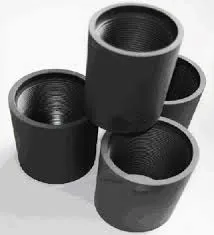- Afrikaans
- Albanian
- Amharic
- Arabic
- Armenian
- Azerbaijani
- Basque
- Belarusian
- Bengali
- Bosnian
- Bulgarian
- Catalan
- Cebuano
- Corsican
- Croatian
- Czech
- Danish
- Dutch
- English
- Esperanto
- Estonian
- Finnish
- French
- Frisian
- Galician
- Georgian
- German
- Greek
- Gujarati
- Haitian Creole
- hausa
- hawaiian
- Hebrew
- Hindi
- Miao
- Hungarian
- Icelandic
- igbo
- Indonesian
- irish
- Italian
- Japanese
- Javanese
- Kannada
- kazakh
- Khmer
- Rwandese
- Korean
- Kurdish
- Kyrgyz
- Lao
- Latin
- Latvian
- Lithuanian
- Luxembourgish
- Macedonian
- Malgashi
- Malay
- Malayalam
- Maltese
- Maori
- Marathi
- Mongolian
- Myanmar
- Nepali
- Norwegian
- Norwegian
- Occitan
- Pashto
- Persian
- Polish
- Portuguese
- Punjabi
- Romanian
- Russian
- Samoan
- Scottish Gaelic
- Serbian
- Sesotho
- Shona
- Sindhi
- Sinhala
- Slovak
- Slovenian
- Somali
- Spanish
- Sundanese
- Swahili
- Swedish
- Tagalog
- Tajik
- Tamil
- Tatar
- Telugu
- Thai
- Turkish
- Turkmen
- Ukrainian
- Urdu
- Uighur
- Uzbek
- Vietnamese
- Welsh
- Bantu
- Yiddish
- Yoruba
- Zulu
petroleum tubing coupling
Understanding Petroleum Tubing Couplings An Essential Component in Oil and Gas Production
Petroleum tubing couplings are critical components in the oil and gas industry, playing a vital role in the extraction and transport of hydrocarbons from the ground to refineries and processing plants. These couplings connect segments of tubing, forming a continuous pipeline that ensures the efficient movement of oil and gas.
In drilling operations, once a well is established, tubing is inserted into the wellbore to facilitate the production of hydrocarbons. The tubing serves as a conduit for the oil and gas to flow to the surface. To achieve this, segments of tubing must be securely joined together, and this is where couplings come into play. A coupling is essentially a threaded piece of metal that connects two pieces of tubing, ensuring a tight seal and preventing leaks.
The materials used for petroleum tubing couplings are typically high-strength steel or alloyed steel, chosen for their durability and ability to withstand extreme pressures and corrosive environments
. The quality of the coupling is crucial, as any failure in the connection can lead to costly leaks, equipment damage, and even environmental disasters.petroleum tubing coupling

The manufacturing of petroleum tubing couplings involves several critical processes, including heat treatment and dimensional inspections, to meet industry specifications and ensure optimal performance. Couplings must be designed to endure various downhole conditions, including high temperatures, high pressures, and corrosive fluids. As a result, stringent quality control measures are applied during the production process.
In addition to standard couplings, which connect tubing sections, there are specialized couplings designed for specific applications. For instance, some couplings are made to accommodate changes in the direction of the tubing, while others may be designed for high-pressure environments. Understanding the specific requirements of each well can help engineers select the appropriate coupling type for their applications.
Furthermore, advancements in technology have led to the development of innovative coupling designs that enhance performance and reliability. Manufacturers are increasingly focusing on creating couplings that offer better resistance to fatigue and stress, thereby extending the lifespan of the tubing system.
In conclusion, petroleum tubing couplings are indispensable in the oil and gas sector. They ensure the integrity and efficiency of the tubing system, allowing for the safe transportation of hydrocarbons. As the industry continues to evolve, the role of couplings will remain crucial, and ongoing innovations will further enhance their functionality, ensuring a more sustainable and efficient energy future. Understanding and properly implementing these components is vital for successful drilling and production operations.
-
Well Casing Extension Couplings – Applications and InstallationNewsJun.06,2025
-
Types of Crossover Subs in Drilling & CompletionNewsJun.06,2025
-
Key Features of High-Quality Tubing Pup JointsNewsJun.06,2025
-
Installation and Maintenance Tips for Steel Couplings for PipeNewsJun.06,2025
-
How to Select the Right Pup Joint for Oil & Gas OperationsNewsJun.06,2025
-
Applications of Stainless Steel Pipe CouplingsNewsJun.06,2025







